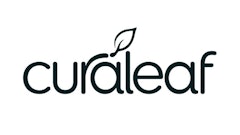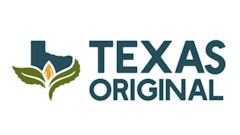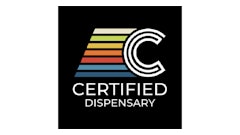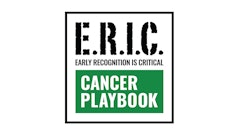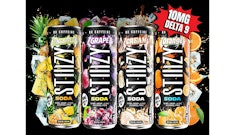
With new consumers entering the legal cannabis market every day, product categories’ market shares are shifting in response to demand. Across the industry, perhaps the most visible trend is an overall decline in flower sales (and prices) and a corresponding uptick in concentrate and edibles sales (and prices). The market is guiding the industry.
Linda Gilbert, managing director of consumer insights at BDS Analytics, and Jessica Lukas, vice president of consumer insights, shared some of the most pertinent consumer data trends in the burgeoning edibles market.
Here are five takeaways that cannabis businesses should bear in mind as this niche of the industry evolves. As Gilbert pointed out, “This is just the beginning.”
1. Know Your Portfolio
As flower sales have dipped, edibles and concentrates have become the fastest-growing segments of the industry. This tracks with growth industry-wide, as new consumers enter the market and dip their toes into the user-friendly dosages of many of the most popular edibles brands. “There really has been a shift in the category makeup over time,” Lukas said.
At your dispensary, your shelves should reflect the relevant data on your local, regional or state market trends. When sales fall in one area or rise in another, the wise dispensary buyer will take that knowledge into the wholesale market—and their company’s customers will reap the benefits.
RELATED: BDS Analytics Adds Arizona to ‘GreenEdge’ Retail Cannabis Sales Tracking Platform
In time, by putting good data to work, dispensary employees and customers will develop a rapport in talking about those product categories and the distinctions between them.
And it’s hard to have a conversation about the cannabis market these days without a nod to beverage trends. Constellation Brands, which makes Corona beer, for example, just invested $3.8 billion in Canopy Growth Corp. And Molson Coors Canada just entered into a partnership with Hydropothecary. Big moves are happening, but consumers haven’t yet seen the end results of that.
“[Beverages are] still a very small percent of edibles and still a very small percent of the overall market—but definitely one that there are a lot of eyes on,” Lukas said.
“While this industry is evolving and growing, we are not mainstream,” Gilbert said, comparing the cannabis industry to the beverage and alcohol markets. “There’s a lot happening here. In reality, [though,] the consumer experience is normalized.”
Within product categories, dispensary owners should be aware of pricing tiers: general ballparks like budget, mainstream, premium and luxury. And within those tiers, various brands are now driving consumer trends.
That’s the next key.
2. Brand Management
Branded products now comprise 38 percent of Colorado sales (up from 19 percent in 2014), for example. “Mood and effect” branding has emerged as nuanced consumer researched is developed. Consumers want products that will make them feel euphoric or relaxed or sleepy; they take topicals throughout the day for pain management, and they consume edibles at nighttime for sleep aid.
“It’s very dependent on the reason why consumers consume,” Lukas said. “Consumers in a lot of cases don’t know the different between sativa, indica and hybrid at the highest level. Therefore, they’re not going to understand cannabinoids, THC and CBD, … and terpenes.”
New consumers in the market (and even many long-time cannabis users) may not know the biological and chemical distinctions between cannabis strains and cannabinoids. Therefore, dispensaries should anticipate a bigger conversation around the different cannabinoids. As research and development continues, retailers must be on the lookout for more innovative products that include a broader range of chemical properties. “It’s not just about THC and CBD,” Gilbert said.
You’ll find branded products (and consumer affinity for those brands) much more clearly in the edibles market than in, say, flower. Dispensary buyers and managers would do well to track their consumers’ spending habits and relay important information to their vendors.
RELATED: What’s Hot in the U.S. Edibles Market?
“Brands are now everywhere,” Lukas said, “and that is surprising to people who aren’t in the industry.” Everything from packaging to messaging follows from pretty much any other consumer industry into cannabis. That is why brand marketing and educational outreach is so important.
3. Lead With Wellness
Gilbert and Lukas said that many of the new entrants to the legal cannabis market are guided by a wellness-based lifestyle. They’re often averse to smoking in the first place, and they’re looking for products that will enhance their already active day-to-day routine.
“The point of entry becomes a lot easier for them to look at an edible, for example,” Linda says.
Growing public support for the idea that cannabis does have medical benefits translates to more wellness-minded consumers and branding, Gilbert said. People are buying in to the messaging they’re seeing in this industry.
However—and Gilbert and Lukas point to the legacy of cannabis here—preferred consumption still leans heavily on smoking and vaping (inhalables), while only 20 percent of consumers in legal U.S. markets and Canada prefer edibles. Based on BDS Analytics trends, Gilbert and Lukas forecasted a narrowing of the gap between those two consumption methods.
“Cannabis consumers are happy campers,” Gilbert said. Painting a picture of the average cannabis consumer these days, she said most are around age 40—both men and women. They work full-time. They’re physically active, and they consider themselves creative. Most of them enjoy the outdoors, and they are willing to try new products. All told, according to BDS Analytics data, these typical cannabis users report feeling more satisfied with life.
The bottom line? Know your consumer – and know where their lifestyles are taking them.
4. Dosage Is Important
This is a new world for many of those new, average cannabis consumers. 28 percent of consumers reported that they prefer edibles with THC dosages between 5 and 20 mg. But 30 percent of consumers reported that they don’t know what dosage they prefer.
Consumer education has a lot of catching up to do, and that’s where a successful dispensary can find a lot of good will. Budtenders are on the front lines, and they have a unique opportunity to capture consumer loyalty by educating new and old consumers alike on the intricacies of dosages and cannabinoid content.
“There is a real need for all of us in this industry,” Gilbert said, “to start bringing our best practices to play here in terms of: How do we deliver products that are safe, that are reliable, that have homogeneity?”
It’s a matter of trust, after all.
“They’re wanting portion control,” Gilbert said. “They’re wanting to consume throughout the day. … It’s much more purposeful, and, to that end, dosage becomes much more important.”
5. “But There’s So Much Confusion!”
“CBD is building a curious and confused consumer following,” Lukas said.
Between THC, CBD, THC-A, industrial hemp, hemp-derived CBD, terpene profiles, indica, sativa, hybrid strains: The chemistry and marketing of the cannabis industry presents a lot of information for even the most seasoned cannabis consumer.
Even state and local regulators, the gatekeepers of policy, are having trouble working through the ins and outs of how to explain cannabis to the general public.
The key here is patience. Find ways of clearly communicating the four previous points: dosage, wellness qualities, brands and product categories, and you’ll build a reputation as a trustworthy source in this new world of cannabis.
This process may involve a paradigm shift, from looking at the cannabis plant as a grower or a chemist to looking at it as a consumer.
“When we’re thinking about cannabis edibles, we really need to think of cannabinoids as ingredients,” Gilbert said. “If we approach it from that vantage point, we’re going to be in a much better position to deliver safe and reliable products to consumers.
Top photo courtesy of Adobe Stock

















